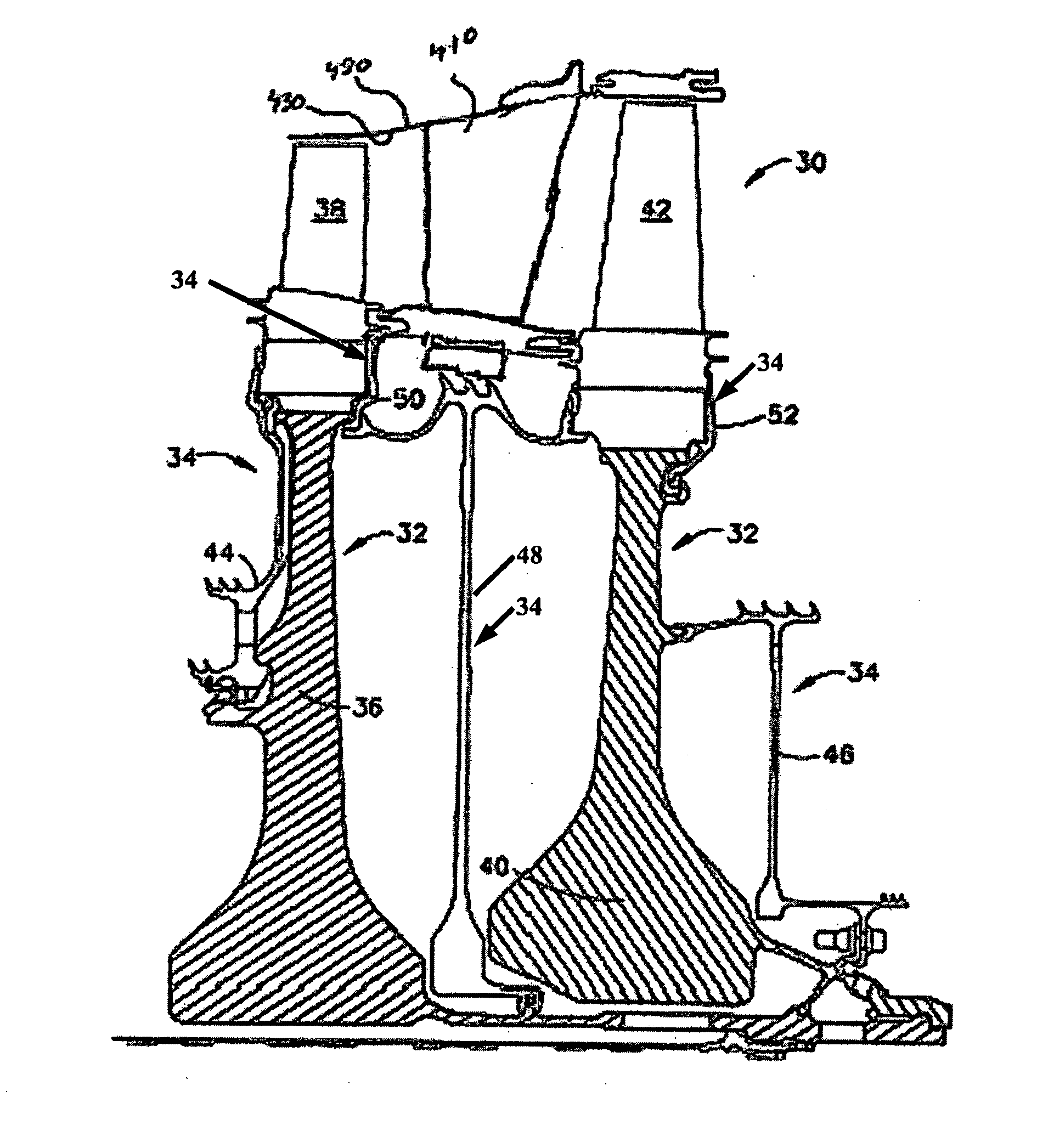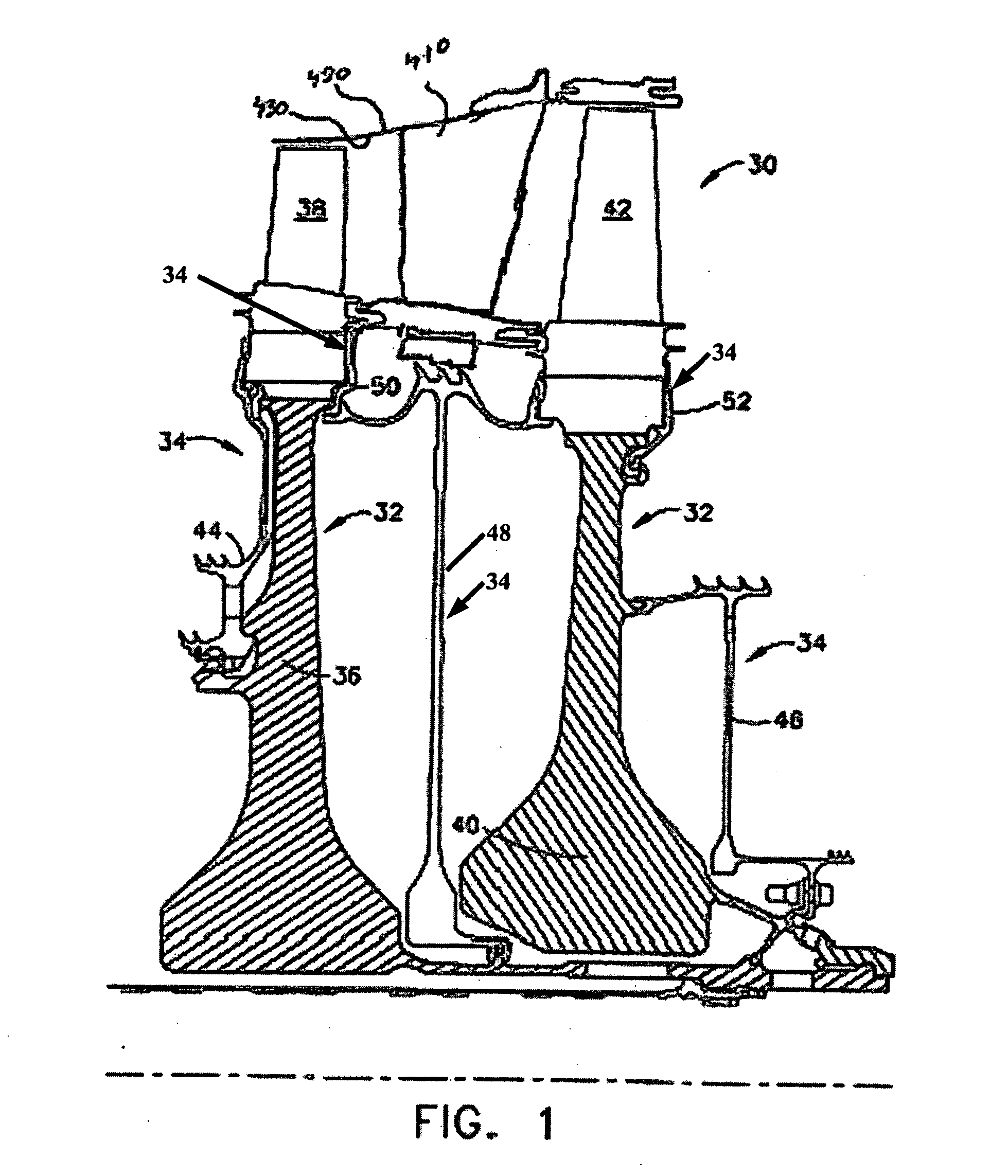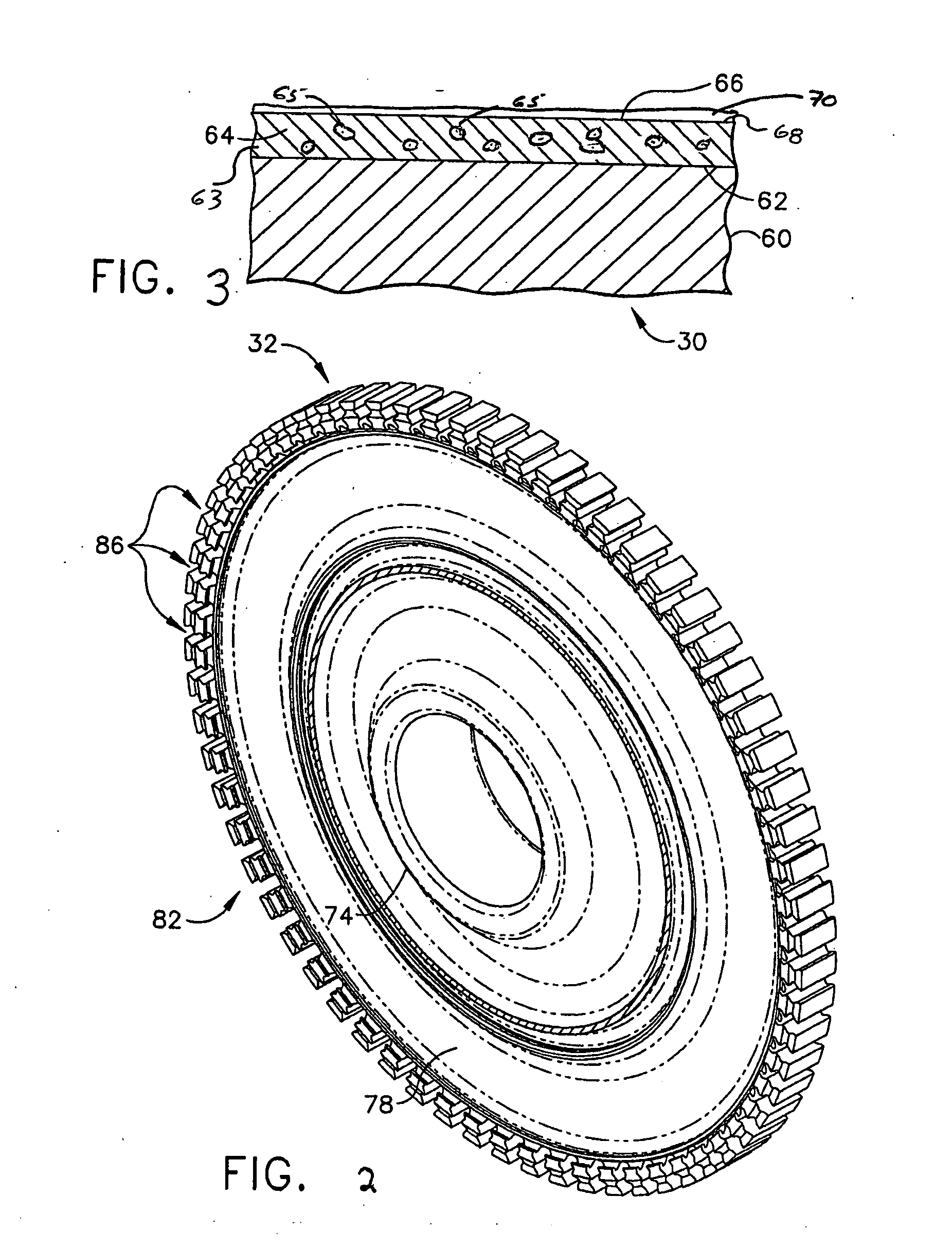Corrosion inhibiting ceramic coating and method of application
a ceramic coating and corrosion inhibitor technology, applied in the direction of superimposed coating process, liquid/solution decomposition chemical coating, manufacturing tools, etc., can solve the problems of increased operating temperature, increased corrosion effect, and insufficient resistance to protect, so as to reduce thermal stress, provide corrosion resistance, and different thermal expansion coefficients
- Summary
- Abstract
- Description
- Claims
- Application Information
AI Technical Summary
Benefits of technology
Problems solved by technology
Method used
Image
Examples
Embodiment Construction
[0025] The present invention is a corrosion resistant coating applied over a turbine engine component. The corrosion resistant coating comprises refractory oxide particles, MAl, MAlX, MCr, MCrX, MCrAlX particles or a combination thereof, uniformly distributed in a silicon-based matrix. The particles provide the coating with the key corrosion resistance, while the silicon-based material is the binder during application and forms the matrix after curing. On curing, the silicon-based material forms a glassy silicate matrix, which upon firing, may convert at least partially to a glassy ceramic matrix.
[0026] As used herein, the term “corrosion resistant coating” refers to coatings that, after curing of the deposited corrosion resistant coating composition of this invention, comprise at least one layer adjacent to the metal substrate having an amorphous, glassy matrix or glassy-ceramic matrix and having embedded therein, encapsulated therein, enclosed thereby, or otherwise adhered theret...
PUM
| Property | Measurement | Unit |
|---|---|---|
| temperature | aaaaa | aaaaa |
| temperature | aaaaa | aaaaa |
| temperature | aaaaa | aaaaa |
Abstract
Description
Claims
Application Information
 Login to View More
Login to View More - R&D
- Intellectual Property
- Life Sciences
- Materials
- Tech Scout
- Unparalleled Data Quality
- Higher Quality Content
- 60% Fewer Hallucinations
Browse by: Latest US Patents, China's latest patents, Technical Efficacy Thesaurus, Application Domain, Technology Topic, Popular Technical Reports.
© 2025 PatSnap. All rights reserved.Legal|Privacy policy|Modern Slavery Act Transparency Statement|Sitemap|About US| Contact US: help@patsnap.com



